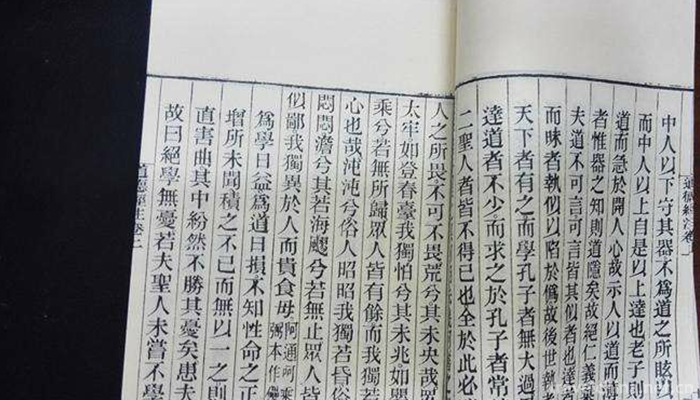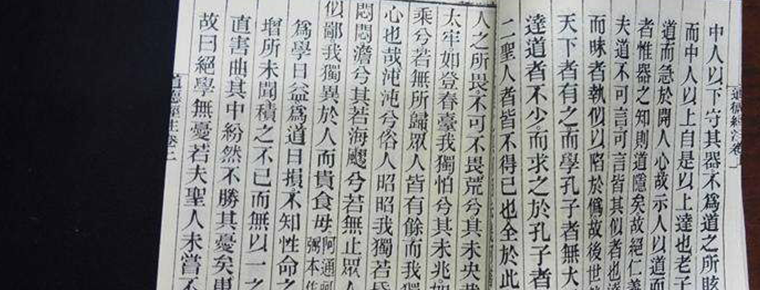Jinling Classic Carving and Printing Techniques
Jinling Classic Carving and Printing Techniques
Jinling classical engraving and printing technology, local traditional handicraft in Nanjing, Jiangsu Province, is one of the national intangible cultural heritage.
The printing technique of Jinling scriptures originated from Tang Dynasty. In 1866 (the fifth year of Tongzhi reign in Qing Dynasty), the founder of the revival of Buddhist culture in modern China, Yang Renshan, and other people of insight founded the Jinling Sutra Inscription Office to inherit the printing skills of Jinling Sutra Inscription. In the 1940s and 1950s, they survived the baptism of war. After the founding of New China, it has been inherited and protected and developed rapidly.
On May 20, 2006, Jinling engraving was approved by the State Council to be included in the first batch of national intangible cultural heritage list, project number: _-79.
historical origin
Since the Pre-Qin Dynasty, there has been a method of inscribing words and stones to print and circulate them. However, stone materials in the material transfer, carving modification, there are many inconveniences, then gradually replaced by wooden plate. So far, the art of block printing has become the mainstream of Chinese culture since Sui and Tang Dynasties. According to historical data, Chinese woodblock printing began in the 7th century AD and was used to print Buddhist scriptures. Master Xuanzang of the Tang Dynasty (600-664) used Huifeng Paper to print the image of the sage of the sages and to give it to the four people. The earliest existing block printing with chronology marks was the Diamond Sutra, which was created by Wang Pei for his parents in 868 A.D. at the London Museum in England.
From 1041 to 1048 AD, Bi Sheng (970-1051), the founder of movable type printing, one of the four great inventions in ancient China, summed up the experience of previous generations of block printing, and through repeated research and experiments, produced clay movable characters with cement as raw material. The invention of movable type printing is an epoch-making revolution in the history of printing and has made great contributions to the development of world civilization. Because of the easy breakage of clay-fired movable type, wood was used as raw material to carve movable type later. However, for various reasons, movable type printing has not been widely popularized in China, and books are still dominated by block printing.
In the mid-15th century, after the improved wooden movable type printing in Gutenberg, Germany, a chapter of modern Western printing was officially opened. At the beginning of the 19th century, western modern printing and printing ink were introduced into China at the same time. In 1843, British missionary Medus founded the Mohai Library in Shanghai, marking the formal entry of modern type printing into China. In the next few decades, Chinese traditional block printing declined sharply and was on the verge of extinction.
In 1866, the Four Classics of Pure Land, which was engraved by the dwellers of Yang Renshan, marked the founding of Jinling Classic Inscription Office and the beginning of the inheritance and use of Jinling Classic Inscription Printing Technology in Jinling Classic Inscription Office.
In 1980, the inscriptions were completely restored with a new look. In 1981, the circulation of Buddhist Scriptures was resumed, and the old engraving and printing (woodcut watermarking, line-mounted letter sets, etc.) techniques were also restored. Advanced modern printing equipment was added to meet the needs of Buddhist books donated by followers around the world. The woodcut Buddhist scriptures continued to be provided to Buddhists and intellectuals, so that the Jinling Buddhist scriptures were still published worldwide in Chinese woodcut Buddhist scriptures in the 21st century. The center is highly appreciated by Buddhist circles at home and abroad.
Process characteristics


-
1.Wonton Noodle
The wonton noodle is also called the bamboo rising face. It is a characteristic snack in Guangzhou. It originated in Guangzhou and Guangdong cuisine
Time 2018-11-14 -
2.Bigan Temple
Bigan Temple, located in Weihui, Henan Province, is one of the most important temple-tomb complex. It is the first temple in China with tomb-worshippers, known as "the first temple in the world&a
Time 2019-01-02 -
3.Scenic Spot of the Source of the Yellow River
Kariqu, one of the sources of the Yellow River, started with five springs, and Maqu, the other with only one springs. This is the source area of the Yellow River. Tourists here can't imagine that the
Time 2019-01-18 -
4.Rizhao Seashore National Forest Park
Rizhao Seashore National Forest Park is located in the north head of Rizhao North Coastal Road, Shandong Province. In 1992, it was approved by the former Ministry
Time 2019-02-07 -
5.Yimeng Red Film and Television Base
Yimeng Red Film and Television Base, located in Changshan Villa, Ma Muchi Township, Yinan County, Linyi City, Shandong Province, was built in 2009. It is a comprehensive tourist area
Time 2019-03-03 -
6.Hequ folk songs
Hequ folk song is a kind of traditional folk music. Shanxi's human geographical environment has formed the "Xikou" mode of life and production in which local people return to Daqingshan and
Time 2019-05-03 -
7.Grey plastic
Gray plastic gray plastic, known as gray batch in ancient times, is the traditional architectural decoration technology in Lingnan area. The material is mainly lime.
Time 2019-05-04 -
8.Legend of Peacock Flying Southeast
Peacock Flying Southeast is the earliest long narrative poem in the history of ancient Chinese literature, and also the best folk narrative poem in ancient China. Ancient Chinese folklore stories
Time 2019-05-10 -
9.Tajik Eagle Dance
Tajik Eagle Dance, a folk traditional dance in Tashkurgan Tajik Autonomous County of Xinjiang Uygur Autonomous Region, is one of the national intangible cultural heritage.
Time 2019-06-17 -
10.Uzbek Ehilai and Yelai
Uzbek Ehilai and Yelai are mainly distributed in Kashgar, Shache, Yecheng and Yining, Ili Kazakh Autonomous Prefecture, Xinjiang Uygur Autonomous Region. Uzbek people have excellent music and dance cu
Time 2019-06-29 -
11.Cao Xueqin
Cao Xueqin (about May 28, 1715 - February 12, 1763) Name Stained with Word Dream Ruan No. Xue Qin No. 2, Qin Xi and celery, Chinese classic. The Dream of Red Mansion The author of the book is controve
Time 2019-09-07 -
12.Fobao scenic spot
Fobao scenic spot, located 128 kilometers southeast of Sichuan Province, is located in the southern edge of Sichuan Basin. It is a primeval forest area at the tail of the North vein of Dalou mountain. It covers an area of 380 square kilometers. It has the characteristics of mountain, water, stone and forest. It is a subtropical humid climate with superior natural conditions and well preserved vegetation.
Time 2020-10-16